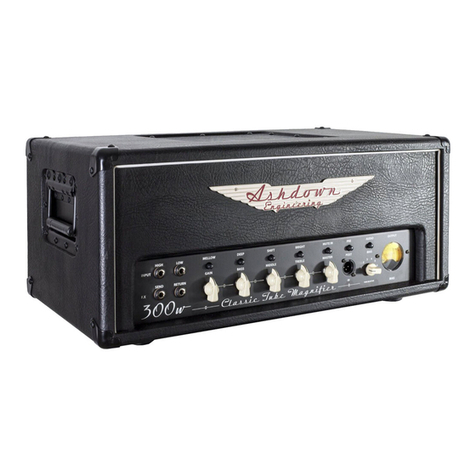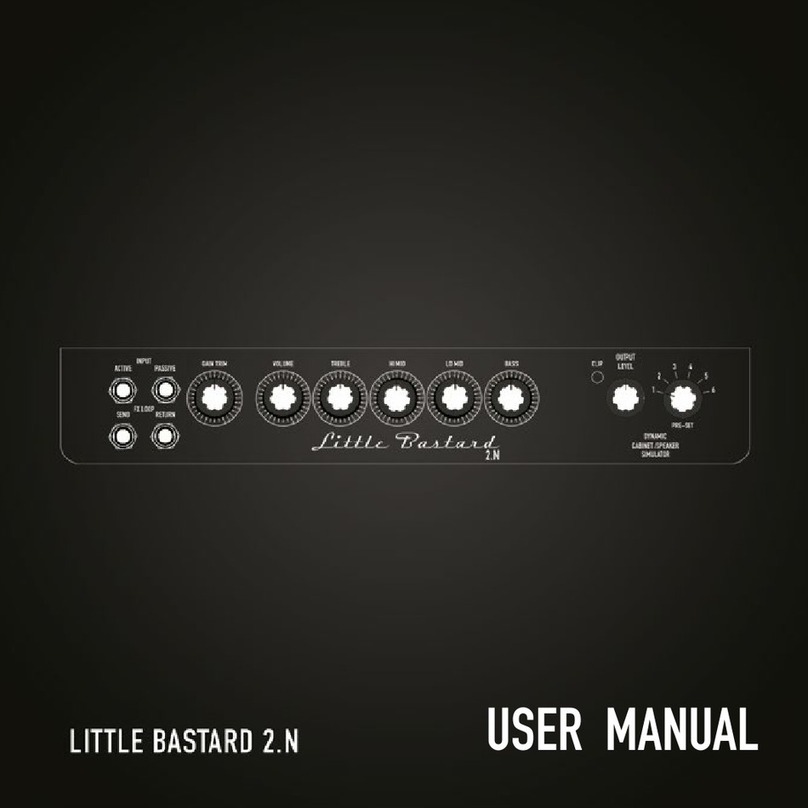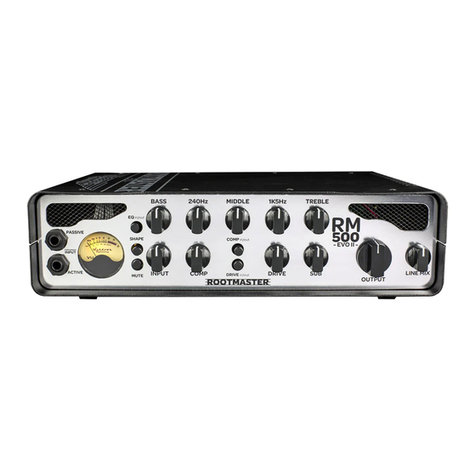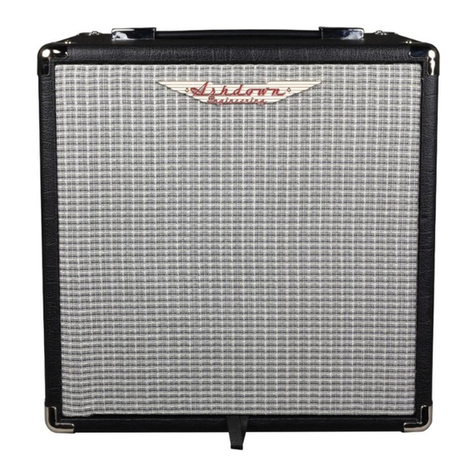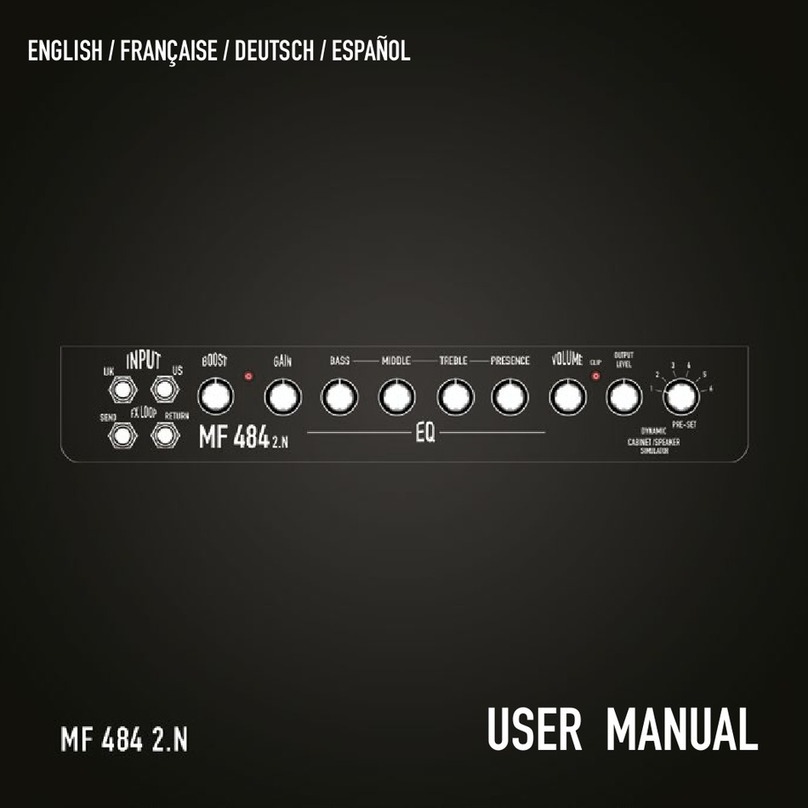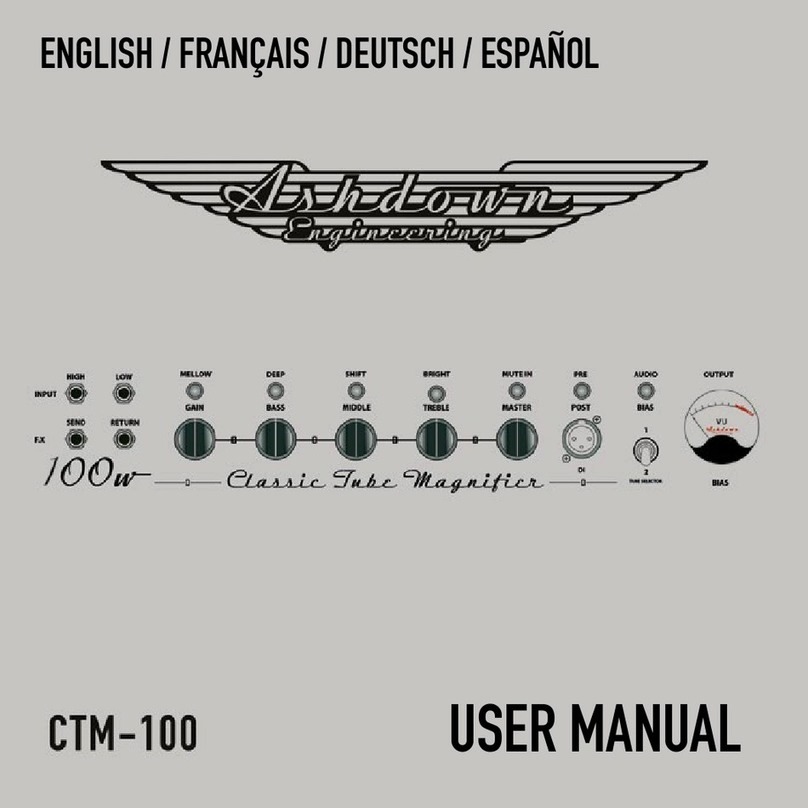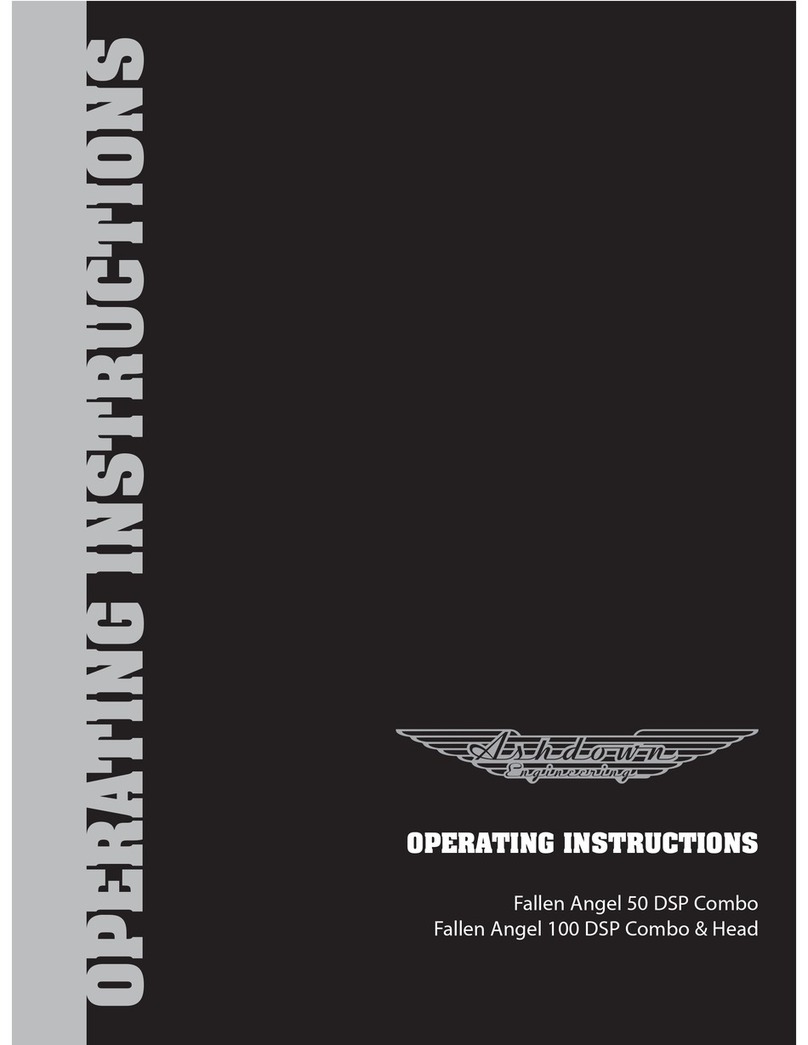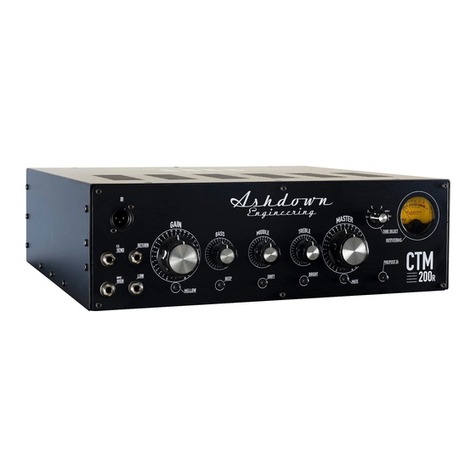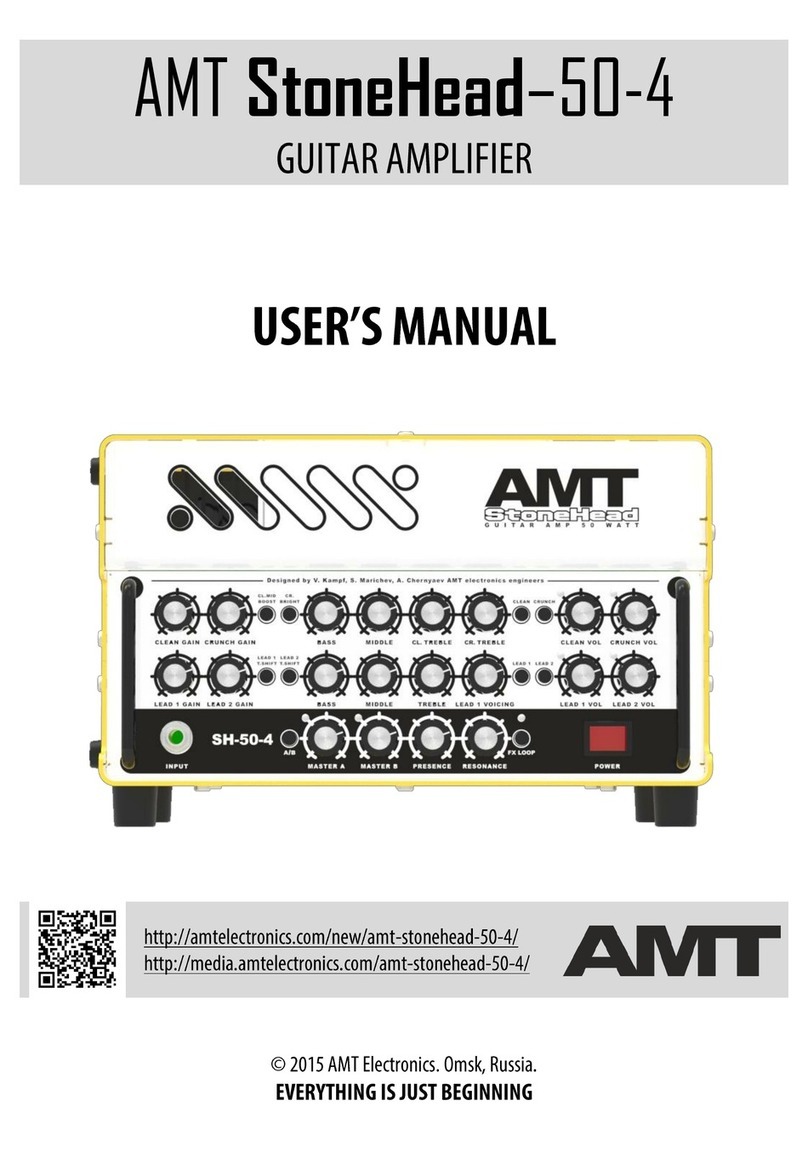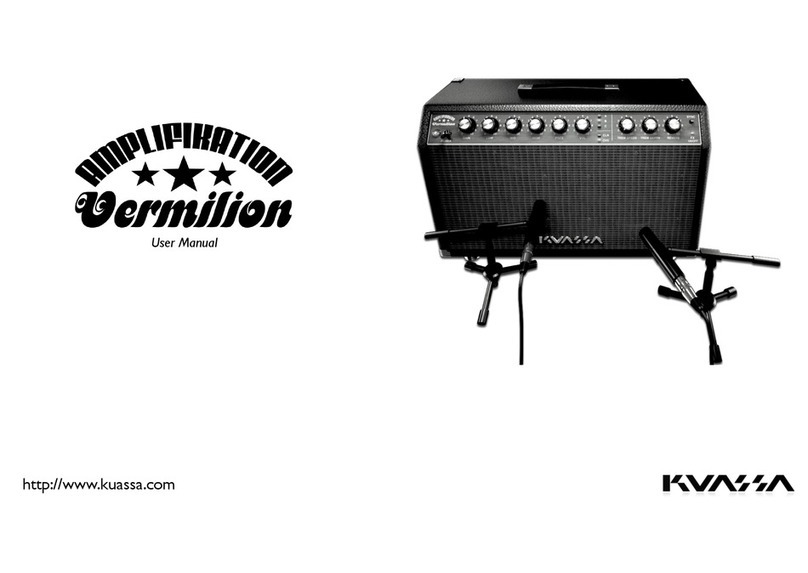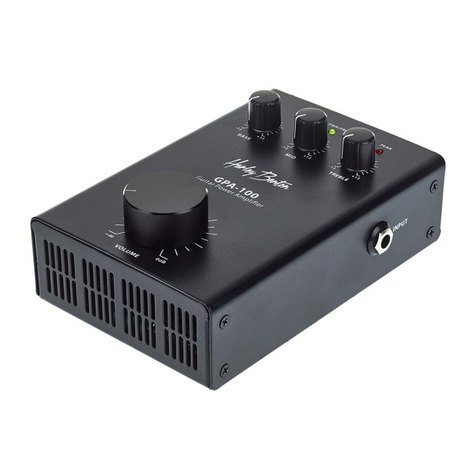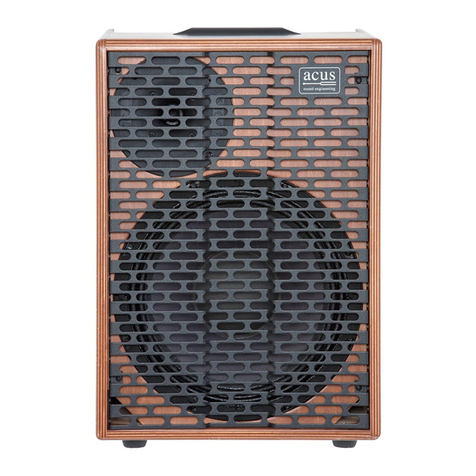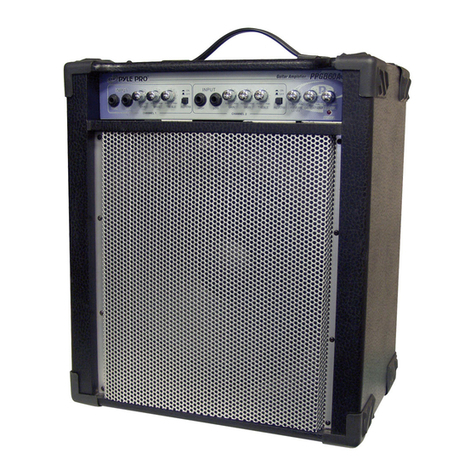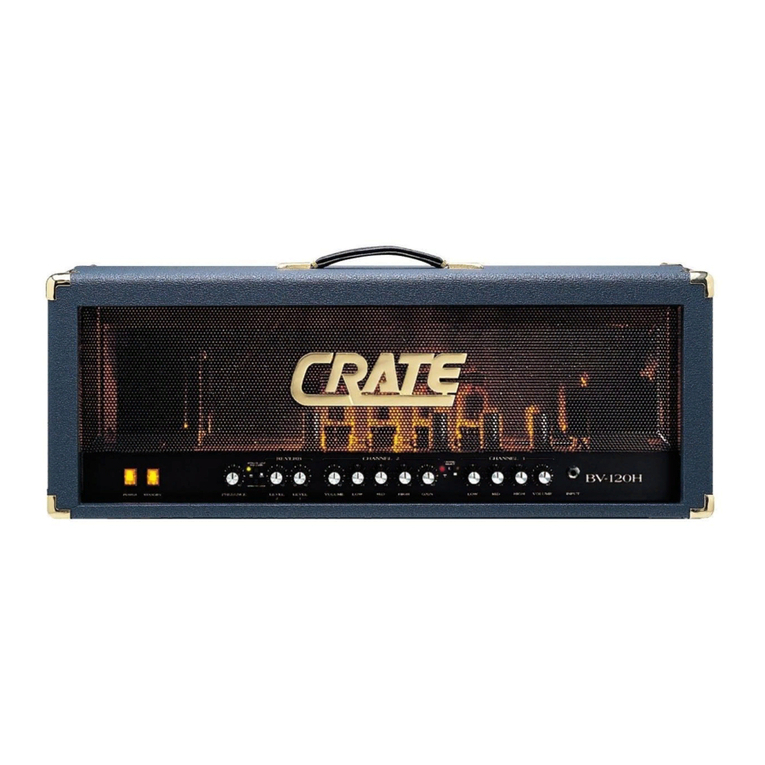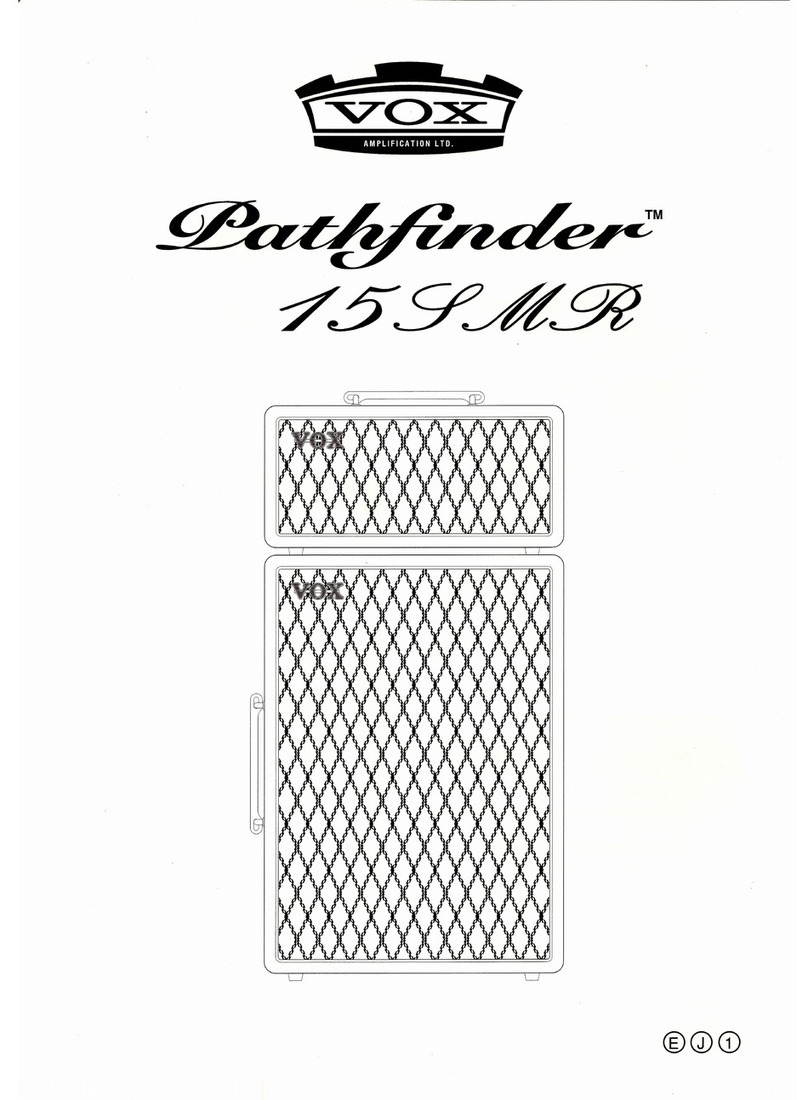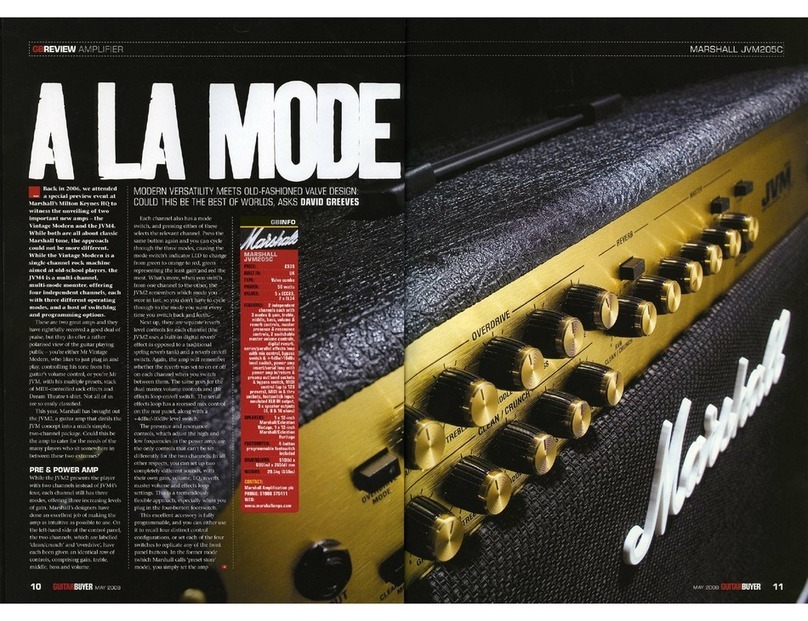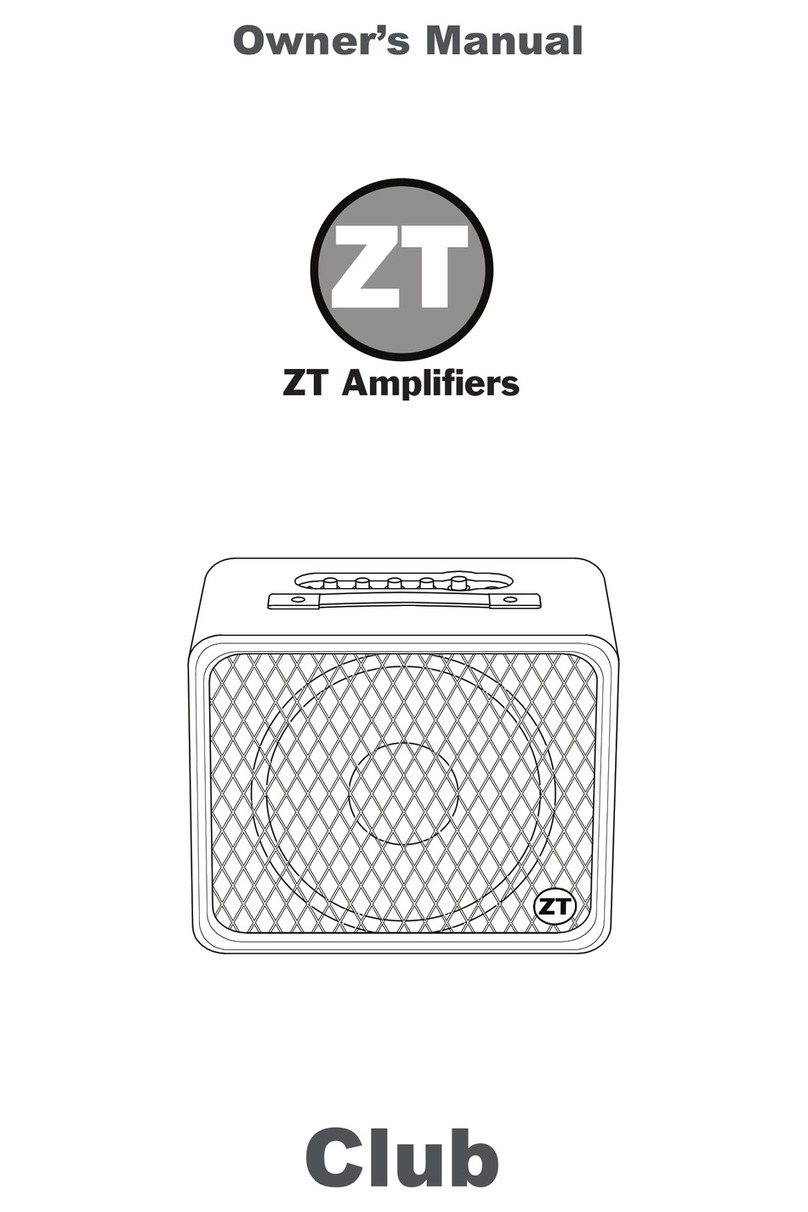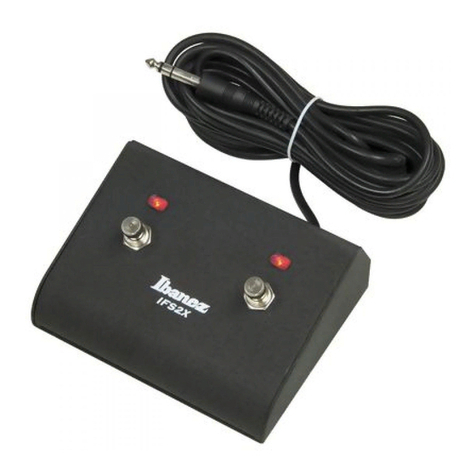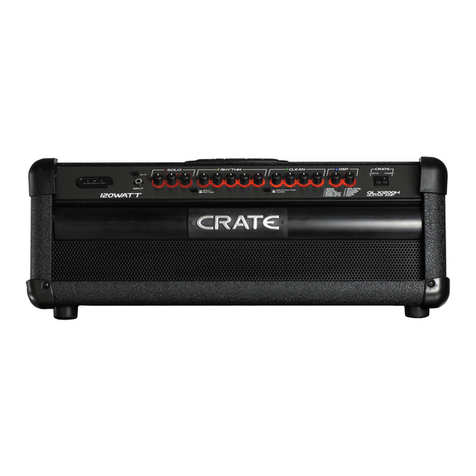
ASHDOWN ENGINEERING - CTM-200-RACK GUIDE DE L’UTILISATEUR GUIDE DE L’UTILISATEUR
CTM-200-RACK
INSTALLATIONS DU PANNEAU AVANT
ENTRÉES - Il y a deux entrées d’instrument marquées LOW et HIGH. L’entrée LOW est
très sensible et aussi une grande impedance pour convenir à la SORTIE DES basses
PASSIVE (Low Output) - L’entrée HIGH est faible sensibilité et une plus faible impedance
pour convenir à la sortie des basses ACTIVE (High Output). Brancher une basse active
(high output) dans l’entrée LOW surchargera l’entrée, créant un son plus gras, plus chaud
et plus déformé. Expérimentez en branchant votre basse dans l’une ou l’autre entrée
pour obtenir le son désiré.
EFFETS ENVOYER ET REVENIR - Ces prises jack de 1/4 » doivent être utilisées pour se
connecter à un dispositif d’effets externes ou à un pedal board. La sortie EFFECTS SEND
doit se connecter à l’entrée de l’unité d’effets, et la sortie de l’unité d’effets doit être
connectée à l’entrée EFFETS RETURN.
CONTRÔLES EQ - Utilisez les commandes MIDDLE, BASS et TREBLE pour effectuer
le ton global du son. Le commutateur MID SHIFT fait fonctionner le contrôle MIDDLE
sur des fréquences plus élevées en position verticale et des fréquences inférieures en
position descendante. Le commutateur BASS SHIFT fait fonctionner le contrôle BASS sur
des fréquences plus profondes en position verticale, et des fréquences moins profondes
en position descendante. Le commutateur BRIGHT ajoute une luminosité globale au son
lorsqu’il est en position verticale. (Remarque : Le commutateur BRIGHT n’est pas efcace
lorsque le contrôle GAIN est réglé à plein).
GAGNER - Cela contrôle le niveau du signal envoyé à la section MASTER. Pour obtenir un
son plus propre, baissez le contrôle GAIN et le MASTER vers le haut. Pour obtenir un son
plus riche et plus déformé, activez le contrôle GAIN et le MASTER vers le bas.
MAÎTRE - Cela contrôle la sortie globale de l’amplicateur.
MUET - En position verticale, ce switch coupe le put out de l’amplicateur (utile pour le
réglage, etc.).
PRÉ/ PUBLIER - Ce commutateur détermine si le signal du DI OUTPUT (voir Installations
de panneau arrière) est pris avant/PRE la section EQ (position descendante) ou après/
POST (position vers le haut).
VU MÈTRES - Le compteur VU fournit une indication visuelle du niveau de sortie de
l’amplicateur. Il agit également comme un compteur de biais, s’il vous plaît voir la page
suivante pour plus de détails.
INSTALLATIONS DE PANNEAU ARRIÈRE
SORTIE DI - Cette prise de prise stéréo jack de 1/4 » est utilisée pour connecter
l’amplicateur à une faible impedance, entrée équilibrée sur un système de sonorisation
ou un mélangeur d’enregistrement. Le signal peut être pris PRE ou POST EQ (voir ci-
dessus), c’est à dire avec ou sans la mise en forme de tonalité ajoutée par la section EQ
de l’amplicateur.
ENTRÉE DE LIGNE - Cette prise jack de 1/4 » est utilisée pour connecter la sortie des
périphériques de niveau ligne tels que les échantillonneurs et les modules sonores.
SORTIES HAUT-PARLEURS - Il existe des connecteurs Speakon dédiés pour les
congurations de haut-parleurs de charge 2, 4 et 8!. Il est important que la sortie ou les
sorties correctes soient utilisées pour correspondre à la charge d’impédance de vos
armoires. Veuillez consulter les diagrammes plus loin dans ce manuel.
DE/PRÉCHAUFFER - Utilisez ce commutateur pour préchauffer les vannes, les amenant
à la température de fonctionnement correcte avant d’effectuer.
VEILLE/PLEIN - Aucun signal n’est envoyé aux haut-parleurs lorsque ce commutateur
est en position STANDBY. Passez à FULL lorsque vous êtes prêt à effectuer.

